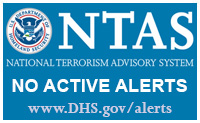Behavioral Threat Assessment

A primary area of expertise for HUMINT Group staff is the professional discipline of "Behavioral Threat Assessment and Management" ("BTAM") a term of art for the formal analysis and management of the potential threat of violence posed by one individual toward another person or group of people.
Behavioral Threat Assessment as a discipline is still in its early stages. Over the past three decades, law enforcement and public safety agencies have recognized the importance of forming interdisciplinary partnerships for the purpose of identifying those factors, behaviors, and patterns which can serve as "red flags" for early intervention to prevent a potentially life-threatening event. These partnerships have led to the formalized discipline of "threat assessment" - a collection or practices and research born out the research and practices of the United States Secret Service, the United States Capitol Police, and the LAPD Threat Assessment Unit.
In just a few short years, driven by public concerns about school violence and mass shootings, establishing threat assessment teams has gone from a cutting edge approach to a standard practice that is even mandated in some municipalities. The importance and value of the work has driven a large body of rapidly expanding research as well as the development of a variety of evidence-based tools.
The goal of Behavioral Threat Assessment is not to predict violence, but rather to identify factors that significantly increase the potential risk of violence, and then explore avenues for managing those factors to reduce that potential risk.
Our consultants can assist you with:
- Establishing policies and procedures for communicating and documenting potential threats within the organization;
- Establishing policies and procedures for the analysis of potential threats by a threat assessment team;
- Establishing guidelines and selection criteria for the composition of a threat assessment team;
- Creating policies and procedures for effective threat management;
- Providing threat assessment services in stalking, executive/celebrity protection, or domestic cases;
- Training the members of a threat assessment team;
- Serving as consultants to - or members of - threat assessment teams;
- Conduting threat assessment interviews; and,
- Developing threat management plans.
Our approach to Behavioral Threat Assessment is evidence-based, and relies on Structured Professional Judgment (SPJ) aided by peer-reviewed instruments specifically calibrated for informing assessment of the risk for violent behavior. By relying on the best available research, our training and experience, and flexible instruments, our goal is to create an individualized threat assessment process that is: objective, systematic, thorough, dynamic, and swift.
In addition, because BTAM is a rapidly-evolving professional field, our staff works diligently to stay current on contemporary research and best practices in the application of that research. We are always eager to share that research through on-site training tailored to your organization's environment and community.
